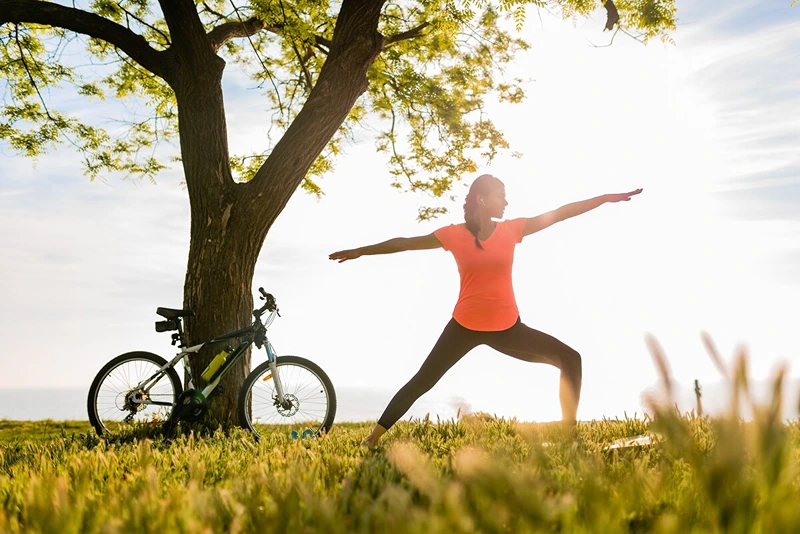At Rac Women, we believe in the transformative power of wellness and fitness. These two concepts, often used interchangeably, have distinct meanings and implications for our overall health and well-being. In this guide, we’ll delve deep into the nuances of both wellness and fitness, shedding light on their importance and how they intertwine.

In This Article
The Distinction Between Wellness and Fitness
Wellness and fitness, though closely related, serve different aspects of our health.
Wellness: A Holistic Approach
Wellness is a broad concept that encompasses various dimensions of health. It’s not just about being free from illness but about a holistic approach to life. The Rhodes Sites explains wellness as a state of complete physical, mental, and social well-being.
Fitness: Physical Health and More
Fitness, on the other hand, is more specific. It pertains to our physical health and our ability to perform tasks, be it daily activities or specific exercises. A deeper dive into the differences can be found at IndiaCSR, which highlights the nuances between the two.
Benefits of Regular Physical Activity
Regular physical activity is a cornerstone of both wellness and fitness. Here are some compelling reasons to incorporate exercise into your routine:
Exercise Controls Weight
Regular activity helps burn calories, aiding in weight management. The more intense the activity, the more calories you burn.
Combat Health Conditions and Diseases
From heart disease to high blood pressure, exercise is a preventive measure. It also aids in managing mental health conditions, reducing the risk of depression.
Improves Mood and Mental Health
Physical activity stimulates the release of endorphins, which are natural mood lifters. It also helps in managing stress and anxiety.
Boosts Energy
Exercise delivers oxygen and nutrients to tissues, helping the cardiovascular system work more efficiently.
Promotes Better Sleep
Regular physical activity can help regulate sleep patterns, ensuring a restful night’s sleep.
Enhances Social Interactions
Joining a gym, attending a dance class, or simply taking a walk in the park can lead to new friendships and social interactions.

The Seven Dimensions of Wellness
Wellness is multi-faceted, and at Rac Women, we recognize the importance of addressing all its dimensions.
Intellectual Wellness
Continuous learning, engaging in creative activities, and embracing new ideas.
Emotional Wellness
Understanding, expressing, and managing emotions in a constructive manner.
Physical Wellness
Engaging in regular exercise, eating a balanced diet, and getting adequate sleep.
Occupational Wellness
Finding fulfillment in one’s job and balancing work-life.
Environmental Wellness
Living in harmony with the environment, understanding the impact of one’s actions on the earth.
Spiritual Wellness
Seeking purpose and meaning in life, may involve religious beliefs or personal values.
Social and Financial Wellness
Building and maintaining healthy relationships, managing finances effectively.

Role of Health and Exercise Professionals
Health and exercise professionals play a pivotal role in promoting wellness. They guide individuals on their journey to better health, ensuring they adopt a holistic approach. Professionals need to be well-versed in all dimensions of wellness, recognizing when to refer individuals to other experts.
| Benefit | Description |
|---|---|
| Weight Control | Helps burn calories and manage weight |
| Disease Prevention | Reduces risk of heart disease, high blood pressure, etc. |
| Mood Enhancement | Releases endorphins, natural mood lifters |
| Energy Boost | Improves cardiovascular efficiency |
| Better Sleep | Regulates sleep patterns |
| Social Benefits | Leads to new friendships and interactions |
The Seven Dimensions of Wellness
Wellness is not a one-size-fits-all concept. It’s a broad spectrum that encompasses various dimensions, each contributing to our overall health and happiness.
Intellectual Wellness
- Continuous learning and mental growth.
- Engaging in creative activities and embracing new ideas.
Emotional Wellness
- Understanding and expressing emotions.
- Building resilience and coping mechanisms.
Physical Wellness
- Regular exercise and physical activity.
- Proper nutrition and adequate sleep.
Occupational Wellness
- Job satisfaction and career growth.
- Balancing work-life and managing stress.
Environmental Wellness
- Sustainable living and understanding our impact on the environment.
- Engaging in eco-friendly practices.
Spiritual Wellness
- Seeking purpose and meaning in life.
- Engaging in spiritual practices or finding solace in personal beliefs.
Social and Financial Wellness
- Building healthy relationships and social networks.
- Effective financial management and planning.
| Dimension | Key Components |
|---|---|
| Intellectual | Continuous learning, embracing creativity |
| Emotional | Emotional expression, resilience |
| Physical | Exercise, nutrition |
| Occupational | Job satisfaction, work-life balance |
| Environmental | Sustainable living, eco-friendly practices |
| Spiritual | Purpose, spiritual practices |
| Social & Financial | Healthy relationships, financial planning |

FAQs on Wellness and Fitness
While fitness pertains to physical health and the ability to perform tasks, wellness is a holistic approach that encompasses various dimensions of health, from emotional to environmental.
The frequency of exercise depends on individual goals and fitness levels. However, it’s generally recommended to engage in moderate-intensity exercise for at least 150 minutes per week. Source
Emotional wellness helps in understanding and managing emotions, building resilience, and coping with life’s challenges. It’s crucial for mental health and overall well-being.
Occupational wellness relates to job satisfaction, career growth, and work-life balance. It plays a pivotal role in our mental health, affecting our stress levels and overall happiness.
Yes, sustainable living, engaging in eco-friendly practices, and understanding our impact on the environment can significantly enhance our environmental wellness.
Ellen Crandall
Meet Ellen, your fitness compass in the world of athletics, training, and gym culture. With a commitment to well-being and a penchant for all things workout-related, Ellen is here to guide you on your journey to a healthier, fitter you. Join the fitness revolution, led by Ellen, and embrace the power of an active lifestyle.




